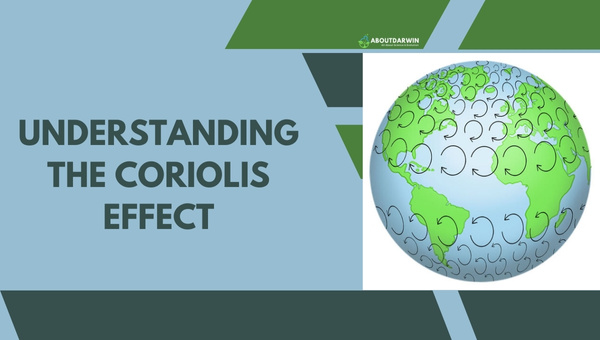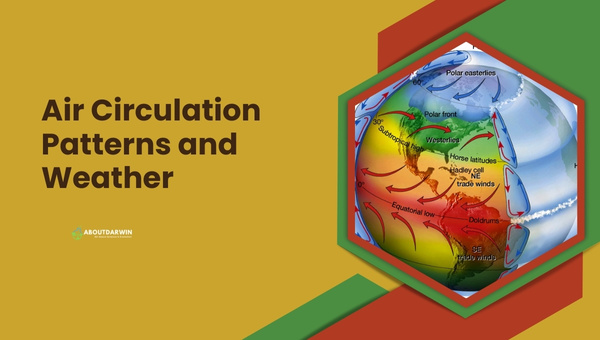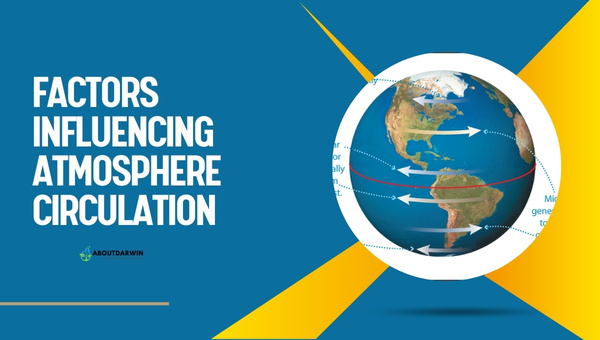Physical Address
304 North Cardinal St.
Dorchester Center, MA 02124
When we think of weather patterns, it’s impossible not to consider the Coriolis Effect. This phenomenon plays a significant role in the way air circulates in the atmosphere. Understanding this concept can help us better comprehend complex meteorological events and anticipate weather conditions.
At the heart of the Coriolis Effect, the Earth’s rotation governs the atmospheric circulation. The effect is responsible for the consistent movement of air and water around the globe. In simpler terms, the Earth’s rotation causes the air to curve as it travels over its surface, influencing the wind direction and, ultimately, the weather we experience daily.
To grasp the impact of the Coriolis Effect, it’s essential to visualize the Earth as a spinning top. As a result of this rotation, air moving in the Northern Hemisphere is deflected to the right, while air in the Southern Hemisphere is deflected to the left.
This deviation, in turn, creates the characteristic weather patterns we associate with our globally diverse climate zones. A deeper understanding of the Coriolis Effect makes us better to predict and prepare for the weather patterns that affect our lives.
Contents
First, let’s define the Coriolis Effect. It’s a phenomenon that causes air and water to be deflected as they move over Earth’s surface due to the planet’s rotation. This effect is more pronounced at the poles and weaker at the equator. It plays a significant role in shaping our weather patterns and global air circulation.

To visualize how the Coriolis Effect works, picture a rotating disc with objects moving on its surface. When they move toward the center, these objects curve to the right (in the Northern Hemisphere) or left (in the Southern Hemisphere) relative to their initial paths.
This curvature happens because as the objects travel inward, the disc’s rotational speed increases, causing them to be deflected. This motion is similar to air masses in Earth’s rotating atmosphere.
The Coriolis Effect impacts air circulation in two ways:
Here are some critical points to remember about the Coriolis Effect:
You might now wonder, “What are some real-world applications of the Coriolis Effect?” Well, meteorologists and oceanographers utilize their understanding of the Coriolis Effect to predict weather and climate patterns. Furthermore, it aids engineers in designing long-range artillery systems, as the Coriolis Effect can cause projectiles to deviate from their intended paths.
The Coriolis Effect is a critical factor in shaping our planet’s atmospheric and oceanic conditions. As humans continue to understand this phenomenon, we can better predict and adapt to Earth’s natural systems.
Read: Earth’s Geomagnetic Reversal: The Phenomenon of Polarity Flip
When discussing air circulation in the atmosphere, it’s essential to consider the Coriolis Effect. This phenomenon is responsible for how air moves across the Earth’s surface, directly influencing weather patterns. In this section, I’ll delve into the different air circulation patterns and how they affect our weather.

At the global level, three primary air circulation cells are vertically-oriented loops of air movement. These are the Hadley Cells, Ferrel Cells, and Polar Cells. These circulation cells distribute heat energy and moisture around the planet, which is crucial in shaping our climate. Let me break down some key characteristics of each cell:
The Coriolis Effect affects each of these circulation cells, which causes air to deflect to the right in the Northern Hemisphere and the left in the Southern Hemisphere. These deflections lead to the formation of prevailing winds, such as trade winds, westerlies, and polar easterlies, shaping regional weather patterns.
To further understand the influence of air circulation on weather, let’s take a closer look at the Intertropical Convergence Zone (ITCZ). The ITCZ is a region where the trade winds converge, characterized by high rainfall and warm temperatures.
As a result, tropical rainforests are often found in these regions. Consequently, the ITCZ’s shifts in position can lead to drastic changes in regional climate and precipitation.
air circulation patterns play a significant role in determining weather patterns around the globe. The Coriolis Effect, in combination with the three general circulation cells, creates prevailing winds that shape regional climates. Understanding these patterns is crucial for predicting weather conditions and addressing climate-related challenges in the future.
Read: Explaining The Carbon Cycle: All You Need To Know
When discussing the Coriolis Effect and air circulation in the atmosphere, it’s essential to consider the various factors influencing atmospheric circulation. In this section, I’ll delve into those factors and explain how they significantly shape the global climate.

Uneven solar radiation is the primary driver of atmospheric circulation. The Earth’s tilt and its curved surface lead to an unequal distribution of solar energy, with the equator receiving more direct sunlight than the poles. This uneven heating creates temperature gradients, which generate pressure gradients and result in air circulation, driving global weather systems.
Here are some crucial elements that also influence atmospheric circulation:
In addition to these key factors, certain cyclical phenomena also impact atmospheric circulation:
Many factors shape atmospheric circulation, including the critical element of uneven solar radiation, Earth’s rotation, and geographical features like land-sea distribution, altitude, and mountain ranges. Additionally, cyclical phenomena such as El Niño, La Niña, and the Arctic oscillation significantly influence worldwide weather patterns and air circulation.

By now, I’ve covered the basics of the Coriolis Effect and how it influences air circulation in the atmosphere. It’s time for a quick recap and to discuss the significance of this phenomenon in weather patterns and our daily lives.
Let’s briefly review the key points:
Now that we’ve revisited the main concepts, I’d like to emphasize the importance of the Coriolis Effect in understanding global climate patterns. By recognizing the role of this phenomenon in directing weather and shaping our climate, we can better predict, plan for, and respond to extreme weather events.
Additionally, the Coriolis Effect has practical applications in various fields, such as:
Overall, gaining a deeper understanding of the Coriolis Effect not only enhances our comprehension of the natural world but also equips us with the knowledge needed to navigate better the challenges posed by our ever-changing planet.